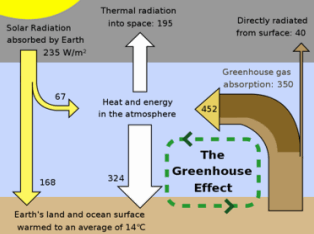A small Rhode Island town is on the brink of financial disaster. A low tax basis and mounting liabilities are leaving Central Falls with few options short of filing for bankruptcy protection. The town has requested financial assistance from state and federal governments and is begging pensioners to accept lower benefits. But how did they get to this point, and what can be done to keep neighboring towns – and the state itself – from bankruptcy? A Cause Map visually shows how this occurred.
Like other towns facing financial difficulty, Central Falls accepted more debt than they are now able to pay. This two-fold reason is at the center of the Cause Map. All of the effects Central Falls now faces – such as closed town services and the loss of local jobs – stem from the fact that the city had to cut spending. The city had to cut spending because it is facing bankruptcy. The Cause Map method allows us to trace the reasons back even further and build a complete picture.
 The first piece is that the town has a large debt – $80M to be exact – in pension liabilities for its 214 city police officers and fire fighters; this is in addition to $25M in budget deficits over the next five years. The generous pensions can be traced back to two state laws regarding public worker negotiations. Rhode Island is one of the few states that allows workers unlimited collective bargaining, meaning that workers can negotiate for a higher salary for any reason. Without any limits, talks often broke down. When talks broke down arbitrators stepped in, and their decisions were binding. In past years, arbitrators often settled on benefits that were comparable to surrounding towns instead of what the city could actually afford. Unlimited collective bargaining and binding arbitration together contributed to the poor negotiations and overly-generous benefits.
The first piece is that the town has a large debt – $80M to be exact – in pension liabilities for its 214 city police officers and fire fighters; this is in addition to $25M in budget deficits over the next five years. The generous pensions can be traced back to two state laws regarding public worker negotiations. Rhode Island is one of the few states that allows workers unlimited collective bargaining, meaning that workers can negotiate for a higher salary for any reason. Without any limits, talks often broke down. When talks broke down arbitrators stepped in, and their decisions were binding. In past years, arbitrators often settled on benefits that were comparable to surrounding towns instead of what the city could actually afford. Unlimited collective bargaining and binding arbitration together contributed to the poor negotiations and overly-generous benefits.
The second piece is that the town doesn’t have a large income. It has a small tax basis since the median family income is only around $33,000. Other sources of income have been pulled back as well – like state and federal funding. The state is facing similar issues, and is in no place to bail out the multiple municipalities at risk. The federal government had extended aid, but rescinding it when Central Fall’s credit rating was downgraded by Moody’s.
Municipal bankruptcy is a rare occurrence, with fewer than 50 occurring in the last 3 decades nationwide. State bankruptcy is practically unheard of. Arkansas was the last to default on its bonds, following the Great Depression. This is in part to bankruptcy laws put in place after to avoid such an occurrence. When one town goes bankrupt, neighboring communities are often negatively affected. The resulting domino effect could be disastrous. Rhode Island is a small state with little room to maneuver if local towns – like Central Falls – start going bankrupt.









